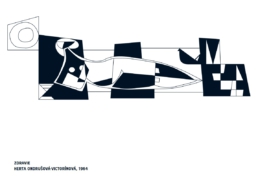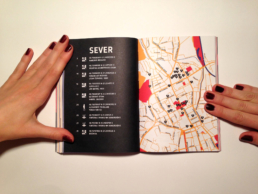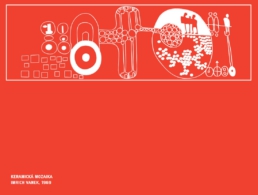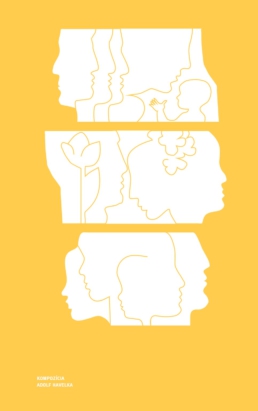Cherishing the thrill of hunting for the unexpected, Slovakian organisation Východné Pobrežie are mapping public art with illustrations rather than photographs.

Stimulating dialogues over the purpose of public space in the post-socialist sphere, the collective have published a range of guides such as this one – Atlas Sôch.
The group began compiling the book, complete with map coordinates and archival data, after noticing a distinct lack of information when it came to public art in Slovakia’s second city of Košice.
“At the beginning, the whole thing stemmed from curiosity – what is the name of this statue, when was this beautiful piece of art created. There was no general information about art in public spaces held by public institutions, so we just started to do our own research,” says Miso Hudak, the founder of Východné Pobrežie.
With over 400 pieces of art in Košice alone, hunting down the information was a task that sent Hudak and his team trawling through the city and municipality archives, as well as museums and galleries.
According to him, “there’s not a single database that has everything in one place, but in the end we managed to identify 85% of those featured in the book.”

“Photos won’t force people to see the art in person.”
The contributors initially took photos of all the pieces. However before long they decided to try a more experimental way of documenting them.
“We prefer to work with an analogue approach to the city, the thing about this is that it encourages people to seek out the places and details in person, not just reading about it on the internet or in books”.
Perhaps it is this approach, one that is imbued with a sense of mystery, that makes the guide such an intriguing book.
According to Hudak, “Photos won’t force people to see the works in person – illustrations on the other hand, are more irritating.”

“We need to start a dialogue on the difference between quality art and propaganda.”
Irritating or not, the guide has nearly sold out, with just a few copies available in the shops. But while the books have proved popular, and are now being used by psychotherapists in art therapy sessions, the artworks themselves are still largely neglected by the authorities.
It is no secret that many are in a state of dilapidation, however Miso hopes that this, and the attitude towards art from the communist period, will change over the years and spark re-investment.
“I think that we need to know all the layers of the city, even ones from much darker parts that played a part in the evolution of the place. Many pieces which were created between 1948-1989 are outstanding, and crafted by awesome artists. We need to start a dialogue about the difference between quality art and propaganda.”
Following the publication of Atlas Sôch, the group are soon to put out a book on Slovakian spa architecture, and are working on another art guide – but as opposed to covering works in parks and adorning buildings, this one will be something a bit different – concentrating on works found inside public buildings.
Learn more about Východné Pobrežie’s projects and where to pick up a copy of Atlas Sôch here.
